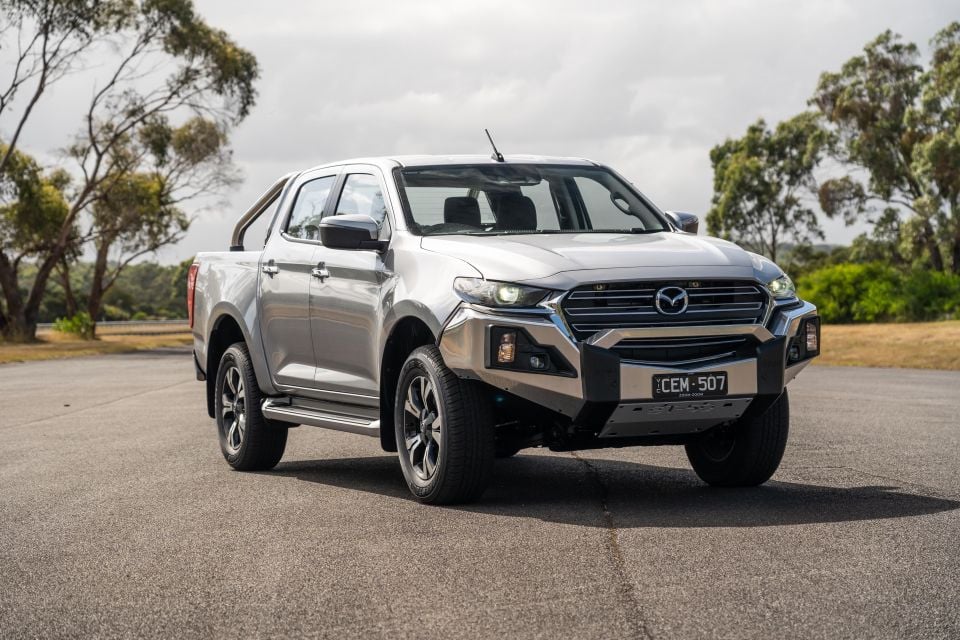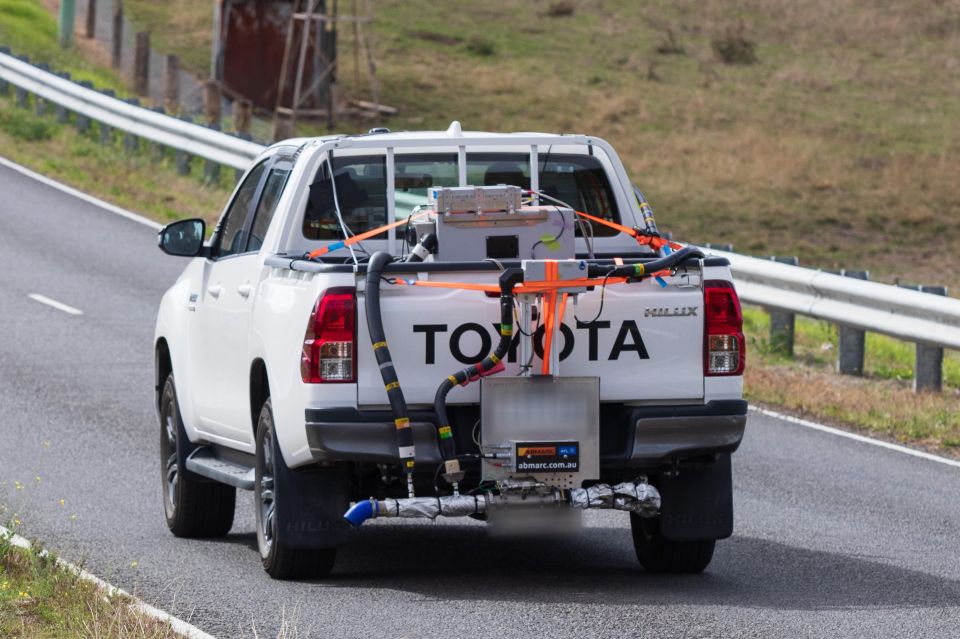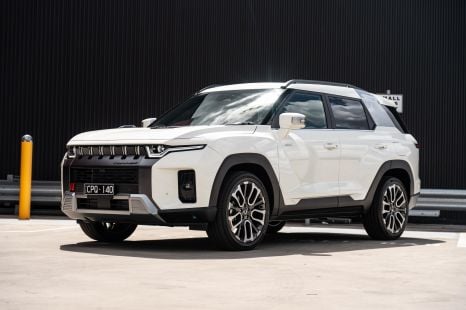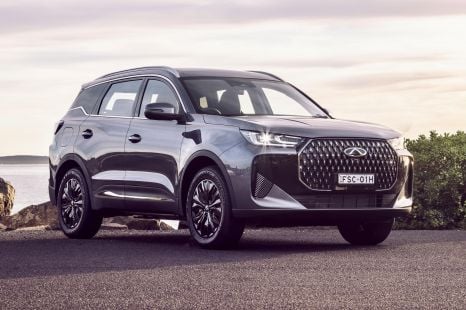

Andrew Maclean
4 Days Ago
Just six of the 21 vehicles subjected to the AAA’s latest real-world testing could match or beat their manufacturer’s claims.

Contributor


Contributor
The Australian Automobile Association’s (AAA) latest round of real-world vehicle testing has found 15 out of 21 models it assessed consumed more fuel than advertised, and a further four exceeded tailpipe emissions limits.
The AAA is the peak body for Australia’s state-based motoring clubs – such as the NRMA, RACV and RACQ – and was allocated $14 million in 2022 by the Federal Government to conduct real-world testing on 200 vehicles previously only tested under lab conditions.
Its latest results show just three cars from its sample of 21 were able to match their claims for fuel efficiency, with the Toyota HiLux’s 4×2 petrol and 4×4 diesel grades performing as advertised, in addition to the Corolla Hybrid.
A further three models managed to be more frugal than claimed by their manufacturers, as the Ford Everest, Kia Cerato and Volkswagen Tiguan beat their respective claims by one, 10 and 13 per cent, respectively.

However, that left 15 of the tested vehicles in the category of consuming more in the real world than in lab testing.
The Mazda 3 and BT-50, Subaru Outback and Crosstrek, non-hybrid Toyota Corolla, Hyundai Venue and Kia Seltos all exceeded their advertised claims by between one and five per cent, or less than 0.5L/100km in each case.
Meanwhile, the Mazda CX-3 and CX-5, Mini Cooper, Skoda Kamiq, Toyota Camry Hybrid, Mercedes-Benz C-Class and Suzuki Swift all recorded fuel consumption figures of six per cent or higher, with the latter hatchback exceeding its lab test result by 31 per cent.
All of the AAA’s real-world road testing is conducted on a 93km loop in and around Geelong. Testing protocols are based on European Union legislation but developed for Australia with consultation between the peak group and local regulators and industry.

The AAA doesn’t just conduct fuel consumption testing, with the vehicles’ emissions outputs also put to the test.
Testing revealed the Hyundai Venue returned nitrogen oxide (NOx) emissions of 83mg/km, which is above the mandated 60mg/km lab limit for petrol-powered vehicles.
The Mazda BT-50 and Toyota HiLux 4×4 utes also fell foul of the diesel limit of 180mg/km, with the AAA recording NOx emissions of 409 and 494mg/km respectively.

However, none of the vehicles tested can compare to the Suzuki Swift when it comes to exceeding carbon monoxide limits (CO).
The AAA claims the Swift produces more than double the mandated lab limit for CO, having emitted 2019mg/km on the test loop against the cap of 1000mg/km.
“These tests show that when comparing vehicles, consumers and fleets cannot assume that vehicle performance as assessed by mandatory lab tests will translate into real-world savings or emissions reduction,” AAA Managing Director Michael Bradley said.
Below are the fuel consumption results from the latest round of the AAA’s real-world testing.
| Vehicle | Fuel type | Mandated lab test claim (L/100km) | AAA testing result (L/100km) | Disparity |
|---|---|---|---|---|
| 2023 Kia Cerato | Petrol | 7.4 | 6.7 | -10 per cent |
| 2021 Mazda 3 | Petrol | 6.2 | 6.4 | +3 per cent |
| 2023 Mini Cooper | Petrol | 5.9 | 6.3 | +6 per cent |
| 2023 Suzuki Swift | Petrol | 4.8 | 6.3 | +31 per cent |
| 2023 Toyota Corolla | Petrol | 6.0 | 6.2 | +3 per cent |
| 2023 Toyota Corolla Hybrid | Petrol | 4.2 | 4.2 | 0 per cent |
| 2022 Hyundai Venue | Petrol | 7.2 | 7.3 | +1 per cent |
| 2022 Kia Seltos | Petrol | 6.8 | 6.9 | +2 per cent |
| 2023 Mazda CX-3 | Petrol | 6.1 | 6.8 | +11 per cent |
| 2023 Skoda Kamiq | Petrol | 5.6 | 6.4 | +14 per cent |
| 2024 Subaru Crosstrek | Petrol | 7.2 | 7.4 | +2 per cent |
| 2023 Mercedes-Benz C-Class | Petrol | 6.9 | 7.4 | +7 per cent |
| 2023 Toyota Camry Hybrid | Petrol | 4.2 | 4.5 | +8 per cent |
| 2023 Mazda CX-5 | Petrol | 6.9 | 7.9 | +15 per cent |
| 2023 Subaru Forester Hybrid | Petrol | 6.7 | 7.4 | +10 per cent |
| 2023 Volkswagen Tiguan | Petrol | 7.7 | 6.7 | -13 per cent |
| 2023 Subaru Outback | Petrol | 7.3 | 7.7 | +5 per cent |
| 2022 Toyota HiLux 4×2 | Diesel | 10.9 | 10.9 | 0 per cent |
| 2022 Ford Everest | Diesel | 7.2 | 7.1 | -1 per cent |
| 2023 Mazda BT-50 | Diesel | 8.0 | 8.2 | +3 per cent |
| 2023 Toyota HiLux 4×4 | Diesel | 7.9 | 7.9 | 0 per cent |
Here are the CO2 results from the AAA’s testing.
| Vehicle | Fuel type | Mandated CO2 lab test claim (g/km) | AAA CO2 testing result (g/km) | Disparity |
|---|---|---|---|---|
| 2023 Kia Cerato | Petrol | 167 | 156 | -7 per cent |
| 2021 Mazda 3 | Petrol | 146 | 150 | +2.7 per cent |
| 2023 Mini Cooper | Petrol | 136 | 147 | +8 per cent |
| 2023 Suzuki Swift | Petrol | 110 | 144 | +31 per cent |
| 2023 Toyota Corolla | Petrol | 139 | 145 | +4.3 per cent |
| 2023 Toyota Corolla Hybrid | Petrol | 97 | 99 | +2 per cent |
| 2022 Hyundai Venue | Petrol | 165 | 171 | +3.6 per cent |
| 2022 Kia Seltos | Petrol | 157 | 162 | +3.2 per cent |
| 2023 Mazda CX-3 | Petrol | 146 | 159 | +8.9 per cent |
| 2023 Skoda Kamiq | Petrol | 127 | 150 | +16.3 per cent |
| 2024 Subaru Crosstrek | Petrol | 165 | 173 | +4.8 per cent |
| 2023 Mercedes-Benz C-Class | Petrol | 157 | 174 | +10.8 per cent |
| 2023 Toyota Camry Hybrid | Petrol | 96 | 107 | +11.5 per cent |
| 2023 Mazda CX-5 | Petrol | 161 | 186 | +15.5 per cent |
| 2023 Subaru Forester Hybrid | Petrol | 152 | 172 | +13.2 per cent |
| 2023 Volkswagen Tiguan | Petrol | 175 | 156 | -12.2 per cent |
| 2023 Subaru Outback | Petrol | 168 | 179 | +6.5 per cent |
| 2022 Toyota HiLux 4×2 | Petrol | 252 | 252 | 0 per cent |
| 2022 Ford Everest | Diesel | 190 | 187 | -1.6 per cent |
| 2023 Mazda BT-50 | Diesel | 207 | 217 | +4.8 per cent |
| 2023 Toyota HiLux 4×4 | Diesel | 207 | 208 | +0.4 per cent |
MORE: All the AAA’s real-world testing results MORE: Real-world fuel use shows popular Australian new cars drastically exceed claims MORE: Which SUVs don’t match their fuel economy stickers in the real world?
Born and raised in Canberra, Jordan has worked as a full-time automotive journalist since 2021, being one of the most-published automotive news writers in Australia before joining CarExpert in 2024.


Andrew Maclean
4 Days Ago


Max Davies
4 Days Ago


Matt Campbell
3 Days Ago


Max Davies
1 Day Ago


Josh Nevett
11 Hours Ago


Damion Smy
7 Hours Ago